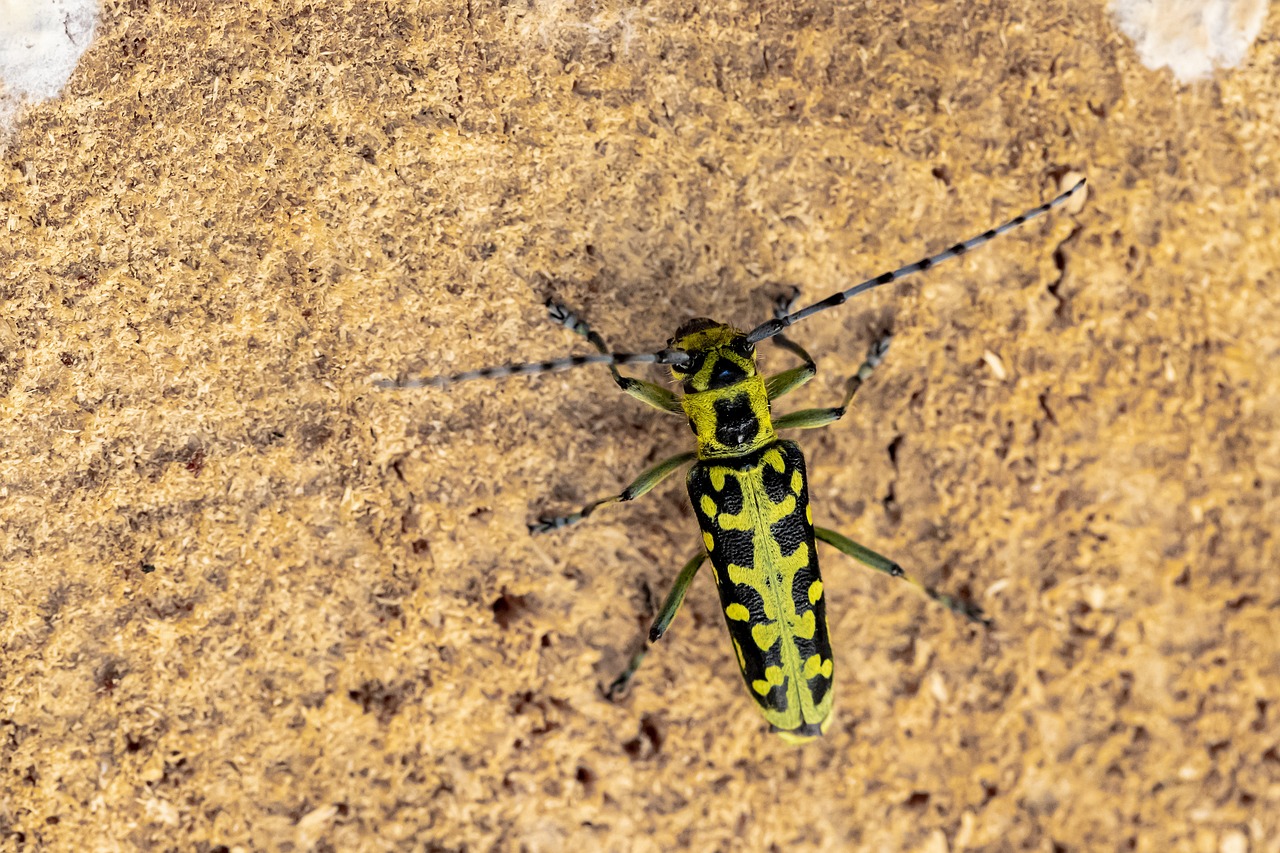The Longhorn Beetle (Saperda scalaris), commonly known as the Ladder Beetle, is an eye-catching member of the longhorn beetle family (Cerambycidae). This species is notable for its distinctive coloration and long antennae, which can exceed the length of its body.
Description
- Appearance: The Saperda scalaris is a medium-sized beetle, typically measuring between 10 to 15 mm in length. It has a distinctive yellow or greenish-yellow body adorned with striking black or dark brown ladder-like markings on its elytra (wing covers), which give the beetle its common name. The head and thorax are generally a similar shade of yellow or greenish-yellow, often with dark spots.
- Antennae: The antennae are long and segmented, often longer than the beetle’s body, and covered with fine hairs. The coloration of the antennae can be a combination of black and yellow.
Distribution and Habitat
- Geographical Range: The Saperda scalaris is widely distributed across Europe and parts of Asia. It is found from the British Isles in the west to Siberia in the east.
- Preferred Habitats: This beetle typically inhabits deciduous forests, woodlands, and areas with abundant deciduous trees, particularly birch, aspen, alder, and willow. It favors areas where dead or dying wood is present, which is essential for its larvae.
Behavior and Ecology
- Feeding Habits: Adult Saperda scalaris beetles feed on the leaves and twigs of various deciduous trees. They are often seen on tree trunks and branches in the spring and early summer when they are most active.
- Reproduction: After mating, females lay their eggs in the bark of weakened or dead trees. The larvae, which are wood-borers, hatch and bore into the wood of their host tree.
Life Cycle
- Larval Development: The larvae of the Saperda scalaris are creamy-white grubs with a segmented body. They spend most of their life feeding under the bark of trees, creating extensive galleries as they feed on the wood. The larval stage lasts for about 1 to 2 years, depending on environmental conditions.
- Pupation: Pupation occurs within the wood, in chambers created by the larvae. The pupal stage lasts several weeks before the adult beetle emerges.
- Adult Emergence: Adult beetles typically emerge from late spring to early summer. They are diurnal and often seen basking in the sun or actively feeding on tree foliage.
Interesting Facts
- Name Origin: The species name “scalaris” means “ladder-like,” referring to the distinctive ladder-like markings on the beetle’s wing covers.
- Indicator Species: Saperda scalaris can serve as an indicator of the health of a forest ecosystem, as its presence suggests a healthy amount of dead or decaying wood, which is critical for many species of insects.
Conservation Status
- Population: Generally, Saperda scalaris is not considered endangered. However, its population can be affected by forestry practices, particularly the removal of deadwood and intensive forest management.
- Conservation Efforts: Maintaining forests with deadwood and allowing natural processes to occur is essential for the conservation of this beetle and many other species that rely on decaying wood.
The Longhorn Beetle (Saperda scalaris) is a fascinating species that plays an essential role in the decomposition of wood and the overall health of forest ecosystems. Its distinctive appearance and behavior make it a beetle of interest to both entomologists and nature enthusiasts.
Visited 848 times, 10 visit(s) today
Views: 1343
Subscribe to the newsletter:
